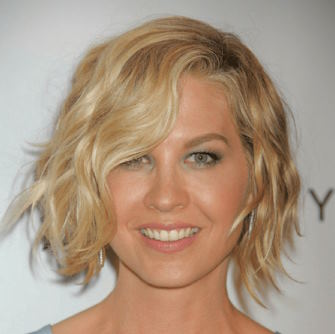Heat-Free Curls for Short Hair

Whether you’re looking for loose waves or tight coils, there is a heat-free curling technique suited for short hair. We’ll explore a variety of methods such as pin curls, Bantu knots, braids and twists, flexi rods and perm rods, and even headbands and socks for curls. By the end, you’ll have the knowledge and confidence to achieve stunning, heat-free curls for your short hair with ease.
Benefits of Heat-Free Curls
 Heat-free curls offer several benefits, making them an attractive option for those with easy hairstyles for short hair, check over here to achieve beautiful, healthy curls. First and foremost, these methods significantly reduce the risk of hair damage caused by excessive use of heat tools such as curling irons and straighteners. Heat can strip your hair of moisture and weaken its structure, leading to breakage and split ends. By opting for heat-free methods, you help preserve your hair’s strength and shine.
Heat-free curls offer several benefits, making them an attractive option for those with easy hairstyles for short hair, check over here to achieve beautiful, healthy curls. First and foremost, these methods significantly reduce the risk of hair damage caused by excessive use of heat tools such as curling irons and straighteners. Heat can strip your hair of moisture and weaken its structure, leading to breakage and split ends. By opting for heat-free methods, you help preserve your hair’s strength and shine.
Another advantage of heat-free curls is that they encourage the embrace of your hair’s natural texture and body. This not only enhances your hair’s overall appearance but also allows you to enjoy styles that complement your natural curl pattern. Additionally, many heat-free curling methods are more affordable compared to using heat tools, as they often require only simple items like bobby pins, hairbands, or even socks.
Furthermore, heat-free curls tend to last longer on shorter hair. Since shorter hair has less weight pulling down on the curls, they are more likely to hold their shape throughout the day. This can be particularly advantageous for those with short hair, as it means you can enjoy your stylish, defined curls for an extended period without needing frequent touch-ups.
Types of Heat-Free Curling Methods
There are several heat-free curling methods that are perfect for short hair, each offering a unique way to achieve stunning curls without heat.
Pin Curls
Pin curls involve wrapping small sections of damp hair around your finger, then securing them to your scalp with bobby pins. This technique is great for achieving tight, defined curls. It’s suitable for most hair textures, especially fine or straight hair, as it adds volume and texture. For best results, ensure your hair is evenly damp and allow plenty of drying time.
Bantu Knots
Bantu knots originate from African hair styling and involve twisting sections of hair and coiling them into small, tight buns. This method creates defined, bouncy curls and is ideal for short hair as it adds volume and texture. Start with slightly damp hair, and don’t twist too tightly to avoid discomfort.

Braids and Twists
Braiding and twisting involve sectioning hair into small pieces and either braiding or twisting them. These methods allow you to create a variety of curl types, from loose waves to tight ringlets. Ensure your braids or twists are consistent in size for even results. Adding a bit of styling cream can help enhance curl definition.
Flexi Rods and Perm Rods
Flexi rods and perm rods are flexible, foam-covered rods that you wrap damp hair around. These tools create consistent, uniform curls. Choose different sizes for a customized look and use a setting lotion to help hold the curls.
Headband or Sock Curls
Headband or sock curls involve wrapping damp hair around a headband or sock, then securing it in place. This method is great for creating soft, loose curls and is gentle on the hair. Variations like using different sock thicknesses can give you different curl sizes.



